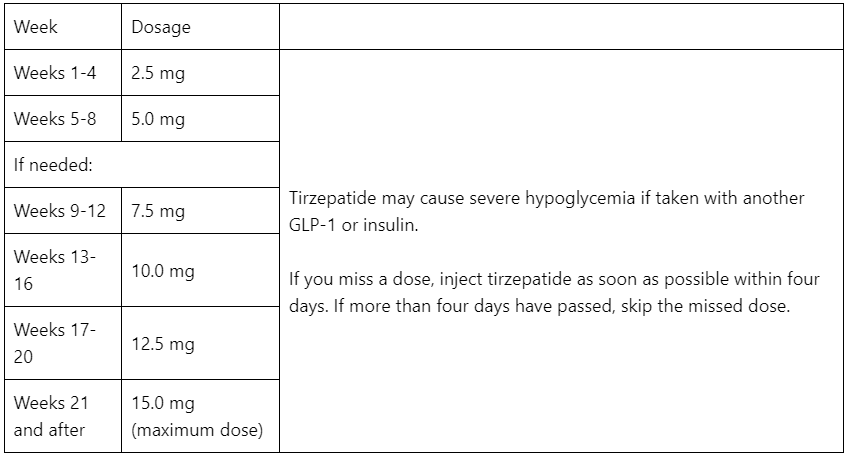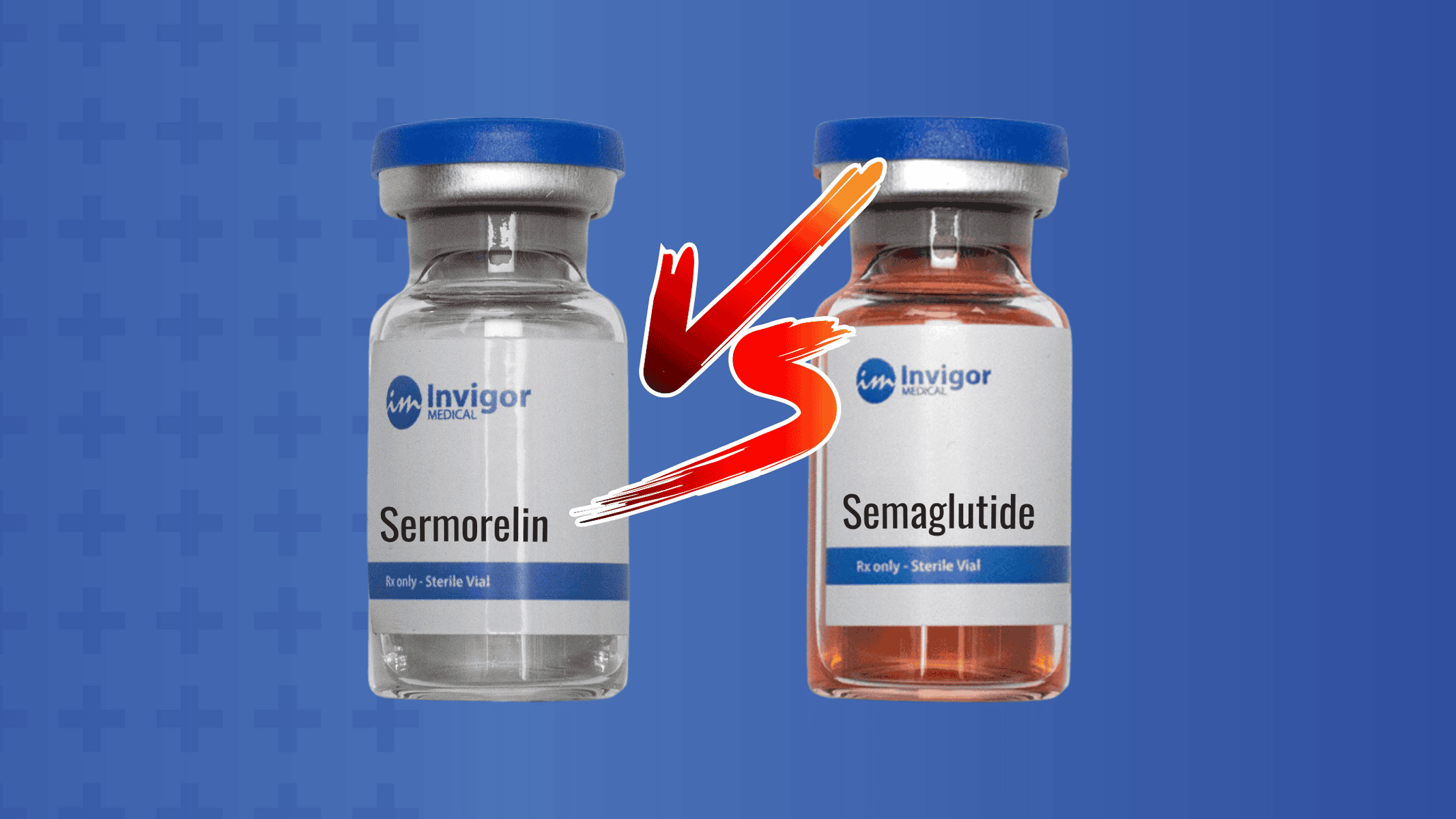Obesity is a complex problem with many causes, making it a chronic condition.3 It’s not just about carrying extra weight; it’s also a big risk factor for serious health problems like diabetes, heart disease, high blood pressure, cancer, and about 200 other diseases. Shockingly, even those with obesity and no other weight-related issues might eventually develop weight-related diseases.3
But there’s some hope in a medication called Tirzepatide. It’s pretty unique because it tackles obesity in two ways. Think of it as a two-pronged approach. Tirzepatide is the only drug that can connect with both GLP-1 and GIP receptors in your body. This special connection helps lower blood sugar levels, improve insulin sensitivity, make your blood lipid levels healthier, and reduce your body weight by more than 20%.
Obesity is a Disease
In 2013, the American Medical Association recognized obesity as a disease. Notably, various esteemed organizations and authorities have also acknowledged obesity as a disease, including the American Association of Clinical Endocrinologists, the American Academy of Family Physicians, the American College of Cardiology, the American College of Surgeons, and more.3
Obesity earns its disease classification for several compelling reasons:
- Impact on Body Functions: The accumulation of excess body fat disrupts normal bodily functions, clearly meeting the disease definition.
- Risk Factor for Other Diseases: Obesity substantially increases the risk of other severe conditions like type 2 diabetes, heart disease, cancer, and more.5, 6
- Metabolic Abnormalities: Obesity leads to metabolic irregularities such as insulin resistance, chronic inflammation, and hormonal imbalances.
- Quality of Life: It diminishes mobility, triggers mental health issues, subjects individuals to social stigma, and reduces overall quality of life.
- Biological and Genetic Factors: Biological and genetic factors play a significant role in excessive hunger, cravings, and how calories are processed in the body.
- Medical Intervention: Addressing obesity often requires medical intervention, involving lifestyle changes, medication, surgery, and various treatments.
- Mortality Increase: Obesity is associated with higher mortality rates.
Losing weight can be a daunting challenge, particularly because obesity influences appetite, satiety, metabolism, body fat, and hormonal balance even after weight loss. When individuals with obesity or type 2 diabetes successfully shed 10% of their body weight, they can enjoy a substantial 21% reduction in their cardiovascular disease risk over the following decade compared to those who maintain their weight.3, 5
Diagnosing Obesity
“Obesity is not a disease which you either do or do not have; rather, it is a continuum, like baldness, in which the diagnosis is made when some arbitrary diagnostic boundary is exceeded.”7
The most commonly used method for measuring and identifying obesity is the body mass index. This number is calculated by dividing your weight in kilograms by your height in meters squared. In adults, a BMI of ≥30 kg/m2 is defined as obesity. For children and adolescents, different cut-offs are used, depending on age and sex.8

Lifestyle-based approaches are the foundation of weight management programs, involving personalized reduced-calorie diets, physical activity, and behavioral counseling. These programs typically result in a 5% to 10% weight reduction. However, only 20% to 40% of people can keep the weight off using diet and exercise.
In the past, surgery was the main effective choice for long-term weight loss, but fewer than 2% of eligible individuals opted for it. Now, guidelines recommend weight-loss medications alongside diet and exercise for anyone with a BMI of 30 or higher or 27 or higher with weight-related medical conditions.6
How does Tirzepatide work as an obesity treatment?
Type 2 diabetes and obesity are closely linked metabolic conditions, with over 44% of type 2 diabetes cases worldwide associated with excess weight.5 Many medications initially used for managing type 2 diabetes are now repurposed for fat loss treatment.
The pancreas plays a crucial role by producing insulin and glucagon, which regulate blood sugar levels. Insulin helps lower blood sugar by facilitating the entry of glucose into body cells for energy, while glucagon and other hormones increase blood sugar levels.
Incretins are natural hormones released by your body, particularly from the cells lining your small intestine after meals. They prompt the pancreas to release insulin. Two notable incretins are glucagon-like peptide-1 (GLP-1) and glucose-dependent insulinotropic polypeptide (GIP).
Tirzepatide closely resembles your body’s natural GLP-1 and GIP hormones. It encourages the pancreas to release insulin and reduces glucagon release, leading to lower blood sugar levels. Moreover, when tirzepatide attaches to GLP-1 and GIP receptors in the stomach, intestines, and brain, it curbs appetite, diminishes cravings, and slows stomach emptying.
Tirzepatide stands out in treating obesity due to its unique ability to bind to both GLP-1 and GIP receptors.4
Tirzepatide has the following beneficial effects:4, 9, 10
- Suppresses appetite
- Increases satiety
- Decreases food cravings
- Slows food digestion
- Increases weight loss
- Increases insulin release from the pancreas
- Decreases glucagon release from the pancreas
- Decreases liver fat
- Protects bone density
- Protects heart function
- Increases insulin sensitivity
- Lowers blood sugar
- Decreases blood pressure
- Reduces LDL (bad) cholesterol
- Increases HDL (good) cholesterol
- Reduces triglycerides

Potential side effects and precautions of Tirzepatide
Commonly reported side effects of tirzepatide encompass symptoms like nausea, vomiting, decreased appetite, constipation, indigestion, stomachache, and diarrhea. These side effects tend to manifest more prominently during the initial phase of tirzepatide usage or upon dosage escalation. However, many individuals using tirzepatide observe a gradual reduction in these symptoms over time.
It’s noteworthy that tirzepatide can delay stomach emptying, potentially influencing the absorption of other medications.
Predominantly, the most frequently encountered side effects of tirzepatide:17
- Nausea: Managing this effect may involve consuming smaller, frequent meals throughout the day.
- Diarrhea: Adhering to a low-fat and bland diet can be helpful.
- Vomiting: Addressing this concern may entail consuming smaller meals consisting of bland foods, with a suggestion to consult your doctor if you struggle to maintain hydration.
- Constipation: Strategies such as increasing fiber and water intake and incorporating physical activity into your daily routine can assist.
- Indigestion: Remaining upright for approximately 30 minutes post-meals and avoiding eating within 2 hours of bedtime can be beneficial.
- Stomach pain: It is advisable to reach out to your healthcare provider if you experience stomach pain.
Moreover, potential serious adverse effects associated with tirzepatide and other GLP-1s encompass:17
- Diabetic retinopathy in individuals with type 2 diabetes
- Gallbladder disease
- Acute kidney injury
- Hypersensitivity or allergic reactions
- Thyroid cancer
- Injection site reactions
- Accelerated heart rate
- Low blood sugar
- Suicidal behavior or ideation
- Pancreatitis inflammation
- Intestinal blockage
Tirzepatide bears a boxed warning concerning the potential risk of thyroid C-cell tumors. This concern arose due to an observed increase in thyroid cancers during rodent testing of tirzepatide. However, it remains uncertain whether tirzepatide poses a similar risk of thyroid cancer in humans.
Indications of thyroid cancer include:
- The emergence of a new mass or lump in the neck
- Swallowing difficulties
- Shortness of breath
- Persistent hoarseness
It is essential to note that individuals with a personal or family history of medullary thyroid carcinoma or multiple endocrine neoplasia syndrome type 2 (MEN2) should abstain from using tirzepatide. Additionally, tirzepatide has not undergone examination in individuals with a history of pancreatitis, and it is contraindicated for individuals with type 1 diabetes. Pregnant women or those planning to become pregnant should avoid tirzepatide due to its potential to cause fetal harm.
Comparison with other weight-loss treatments
In the United States, there are currently six medications for the treatment of obesity, with many more undergoing development and testing.
Traditionally, the most effective weight-loss drugs operated by suppressing appetite through actions in the brain. GLP-1 RAs (such as liraglutide, semaglutide, and the combined medication tirzepatide) work both in the brain and peripheral organs.
These medications function by slowing down stomach emptying, which helps reduce feelings of hunger and appetite. They also stimulate the release of insulin in the pancreas, enhance insulin sensitivity in the liver, and further decrease hunger and cravings by targeting specific areas in the brain.
The U.S. prescription medications for weight loss include:
Orlistat
Your pancreas releases enzymes called lipases, which are delivered into your intestines following meals. These lipases serve to break down fat into its basic components, allowing it to be absorbed into the bloodstream through the intestinal wall. The way lipases function is akin to how detergents work when you apply them to greasy dishes.
Orlistat operates by inhibiting lipases. When fat isn’t broken down, it exits your body undigested through your stool. Orlistat reduces fat absorption by approximately 30%, meaning that roughly 30% of the dietary fat you consume passes through your intestines and is expelled in your stool, without being utilized for energy. This reduction in fat absorption can contribute to weight loss.
However, as you might expect, expelling undigested fat in your stool can result in some side effects. Common side effects associated with Orlistat use encompass:
- Oily or fatty stools
- Excessive intestinal gas
- Increased frequency of bowel movements
- A sudden and compelling urge to have a bowel movement
- Challenges in absorbing fat-soluble vitamins like vitamins A, D, E, and K
If you are prescribed Orlistat, your doctor will likely recommend taking multivitamins to help ensure your body receives an adequate supply of these vitamins. Notably, individuals with malabsorption disorders, gallbladder disease, or those who are pregnant or planning to become pregnant should avoid taking Orlistat.
It’s important to note that individuals using Orlistat tend to lose an average of 6.5 to 7.5 pounds per year, making it a less favored option for weight loss.18, 19

Naltrexone/Bupropion
Contrave is a prescription weight-loss medication that combines two active ingredients: bupropion, which is an antidepressant and a dopamine/norepinephrine reuptake inhibitor, and naltrexone, which is an opioid receptor antagonist. Together, these medications work to regulate reward pathways in the brain and reduce the common cravings associated with addiction and eating behaviors.
When using Contrave, it should be complemented with a low-calorie diet and a structured exercise regimen. There are specific foods that you should avoid while taking Contrave.
Common side effects associated with naltrexone/bupropion include:
- Nausea
- Vomiting
- Indigestion
- Diarrhea
- Constipation
- Abdominal pain
- Headache
- Dizziness
- Agitation
- Insomnia
However, certain individuals should refrain from taking bupropion/naltrexone. This includes those with uncontrolled high blood pressure, a history of seizures, a history of eating disorders, or individuals undergoing withdrawal from drugs or alcohol. Pregnant women or those planning to become pregnant should also avoid naltrexone/bupropion. Additionally, if you are currently taking monoamine oxidase inhibitors, this combination medication should not be used.
Research has shown that individuals taking bupropion/naltrexone experienced an average weight loss of 11 pounds within a year.18
Phentermine/Topiramate
Qsymia is a brand name for a combination medication consisting of two active ingredients: phentermine, an appetite suppressant, and topiramate, an anti-seizure medication. This medication is prescribed for the purposes of weight loss and appetite control.
Phentermine operates by increasing norepinephrine and dopamine levels in the brain, effectively suppressing appetite. On the other hand, topiramate is believed to enhance feelings of satiety, reduce appetite, alter taste receptors, and diminish impulsive eating behaviors. When these two medications are combined, they tend to be more effective for weight loss while causing fewer side effects compared to either drug used alone.
Common side effects experienced when taking phentermine/topiramate include:
- Dry mouth
- Tingling sensations and numbness
- Headache
- Insomnia
- Mood changes like depression, anxiety, and irritability
- Attention-related problems
- Rapid heartbeat or the sensation of a racing heart rate
- Dizziness
- Fatigue
It’s important to note that phentermine/topiramate should not be used by individuals with uncontrolled high blood pressure, coronary artery disease, hyperthyroidism, glaucoma, or those who are sensitive to stimulants. Furthermore, this medication is teratogenic, meaning it may cause harm to a developing fetus. Consequently, it should be avoided by pregnant women or those planning to become pregnant.
Additionally, phentermine/topiramate usage in adolescents and young adults has been associated with an increased risk of suicide and suicidal thoughts.
Research has shown that individuals taking phentermine/topiramate can achieve an average weight loss of approximately 14.5 to 19 pounds within a year.18, 19

Liraglutide
Liraglutide is an injectable medication used for weight loss. It functions as a GLP-1 receptor agonist, effectively mimicking the appetite-suppressing and blood-sugar-lowering effects of the body’s natural GLP-1 hormone.
Common side effects associated with liraglutide use include:
- Nausea
- Diarrhea
- Constipation
- Vomiting
- Injection site reactions
- Headache
- Low blood sugar in individuals with type 2 diabetes
- Indigestion
- Fatigue
- Dizziness
- Abdominal pain
- Upper abdominal pain
In addition to these side effects, there are several safety considerations when taking liraglutide, including an increased risk for thyroid cancer (as observed in rodent studies), inflammation of the pancreas, gallbladder disease, low blood sugar, a faster heart rate, kidney disease, and an elevated risk of experiencing suicidal thoughts or behaviors.
Semaglutide
Semaglutide, is an injectable prescription medication initially designed to manage type 2 diabetes. It operates as a GLP-1 receptor agonist, effectively mirroring the actions of the naturally produced GLP-1 hormone in the body.
Semaglutide offers several beneficial effects:
- Blood sugar reduction
- Appetite suppression
- Diminished food cravings
- Increased feelings of fullness
- Slowed stomach emptying
Common side effects associated with semaglutide use include:
- Nausea
- Vomiting
- Diarrhea
- Constipation
- Abdominal pain
- Injection site reactions
- Allergic reactions
Individuals with a personal or family history of medullary thyroid cancer, multiple endocrine neoplasia 2 (MEN2), or a history of pancreatitis should refrain from taking semaglutide. Semaglutide is also not recommended for pregnant individuals or those planning to become pregnant.
When using semaglutide, it’s important to be aware of a heightened risk of developing thyroid cancer (observed in rodent studies), pancreas inflammation, gallbladder disease, low blood sugar, an increased heart rate, kidney disease, and potential suicidal thoughts.
Beyond weight and fat reduction, semaglutide usage led to improvements in various health indicators, including blood pressure, waist circumference, cholesterol and triglyceride levels, and reduced risk of type 2 diabetes.22
Tirzepatide
Tirzepatide, an injectable weight-loss medication initially designed to manage type 2 diabetes, is a unique combination of glucose-dependent insulinotropic polypeptide (GIP) and GLP-1. It marks the first medication of its kind and functions by replicating the effects of the naturally produced GIP and GLP-1 hormones in the body.
Tirzepatide delivers several benefits:23
- Slows stomach emptying, reducing hunger
- Enhances feelings of satiety by acting in critical brain regions
- Boosts insulin secretion from the pancreas
- Improves insulin sensitivity in the liver
- Increases the breakdown of fat
- Reduces glucagon release
Common side effects associated with tirzepatide use include:
- Nausea
- Diarrhea
- Vomiting
- Fatigue
- Headache
- Low blood sugar
- Dizziness
- Nervousness, anxiety, and depression
- Fast heart rate
- Allergic reactions
- Injection site reactions
Tirzepatide dosage and administration
Tirzepatide is typically administered as a weekly subcutaneous (under the skin) injection. The dosing starts at a lower amount and is gradually increased until you reach your maintenance dose. You have flexibility in choosing the time for your tirzepatide injection, and you can take it with or without meals. When injecting, target the fat just beneath the skin in areas such as the abdomen, thigh, or upper arm. To prevent any potential discomfort or issues, it’s advisable to rotate your injection sites with each dose. This helps ensure that the medication is absorbed effectively and reduces the risk of irritation or lumps at the injection sites.

Success stories and testimonials from Tirzepatide users
Based on reviews from Drug.com and WebMD, tirzepatide appears to have mixed feedback from users:
Drug.com Reviews
- On Drug.com, tirzepatide received an average rating of 8.7 out of 10.
- Users who reviewed the medication primarily used it as an off-label treatment for obesity.
- Patients generally reported significant weight loss and manageable side effects.
- Constipation was a commonly reported side effect.
- Most users experienced a steady and consistent weight loss, typically ranging between one and two pounds per week.
- Some users who rated tirzepatide lower reported experiencing significant side effects such as a fast heart rate, dizziness, and severe diarrhea.
WebMD Reviews
- On WebMD, tirzepatide received an average rating of 3.8 out of 5, although there were only four reviews.
- One reviewer gave it a 5-star rating for weight loss but mentioned challenges in obtaining the medication due to frequent pharmacy stock shortages.
- Another reviewer rated tirzepatide at 4.7, with the main issue being diarrhea.
- The third reviewer rated tirzepatide at 2.7, primarily due to experiencing body pain despite weight loss.
- The last reviewer gave it a 3.0, mentioning initial side effects like increased sensitivity to touch, sulfur burps, and diarrhea. They were still working on finding the right dosage.
These reviews reflect individual experiences, and the effectiveness and side effects of tirzepatide can vary from person to person. It’s important for individuals considering tirzepatide to discuss its use, potential benefits, and side effects with a healthcare professional. Additionally, any concerns about side effects or difficulties with the medication’s availability should be addressed with a healthcare provider for guidance and potential adjustments to the treatment plan.
Conclusion: Is Tirzepatide the game-changer in weight loss treatment?
Tirzepatide stands out as a groundbreaking option for weight loss treatment. Among the GLP-1 receptor agonists, it excels in delivering remarkable weight loss outcomes. When weighing the choice, it’s crucial to engage in a comprehensive discussion about your weight loss treatment possibilities with your healthcare provider. In order to buy tirzepatide, head over to Invigor Medical.
Frequently Asked Questions
How does Tirzepatide work?
Tirzepatide operates as a dual GIP and GLP-1 receptor agonist. It reduces hunger, increases the feeling of fullness, and enhances blood sugar management by mimicking the actions of naturally occurring GIP and GLP-1 hormones. Tirzepatide stimulates insulin production in the pancreas, slows down stomach emptying, curbs appetite, and enhances insulin sensitivity in the liver.
How is Tirzepatide administered?
Tirzepatide is administered through a once-weekly subcutaneous injection just under the skin. The dose is gradually increased during the initial weeks of treatment until reaching a maintenance dose.
What are the side effects of Tirzepatide?
The most frequent side effects involve mild-to-moderate gastrointestinal symptoms, such as nausea, vomiting, diarrhea, and constipation. These symptoms are typically more pronounced when starting the medication or adjusting the dose.
How much does Tirzepatide cost?
Retail prices for Tirzepatide vary depending on the prescribed dosage, ranging from $900 to $1500 per month. Savings cards and copay assistance programs are available.
Who should not take Tirzepatide?
Individuals with a personal or family history of medullary thyroid cancer, multiple endocrine neoplasia type 2 (MEN2), or a history of pancreatitis should avoid Tirzepatide. This caution extends to pregnant individuals or those trying to conceive. Tirzepatide use also carries additional risks, including an elevated risk of thyroid cancer (as observed in rodent studies), pancreatic inflammation, gallbladder issues, low blood sugar levels, an increased heart rate, kidney concerns, and a potential rise in suicidal thoughts or actions.
How long does it take for Tirzepatide to start working?
Most people typically experience weight loss and improved blood sugar control within 2-4 weeks of initiating Tirzepatide treatment, with noticeable weight loss occurring around 6 to 9 months.









